You wouldn’t think a sliver of wood, roughly two feet long, would be critical to the stunning sound fusion created by a guitar. Yet, the design and installation of a Jackson guitar neck can change the entire dynamics of your music, transforming the sweet harmony into something truly extraordinary. And believe me, as an engineer with a lifetime of lutherie experience, I know the significance.
The real magic sits in understanding every intricacy, from the specifications to the subtle variations in compatibility and installation. Right neck shape can mean the difference between a comfortable playing experience or a tedious, finger-aching disaster. Selecting Jackson guitar neck and fitting it impeccably can enhance not just how you play, but how you feel about playing.
Through this guide, we will delve deeper into this vital guitar component. Towered by tons of technicalities and jargon, it’s easy to get lost, but fret not! Whether you’re a master troubadour, an avid hobbyist, or a beginner guitarist taking your first steps into the vast realm of Jackson guitars… I’m here to lend my expert advice, and together, we’ll navigate your path to choosing and installing the right neck for your music journey.
Jackson Guitar Neck Specifications
Understanding Neck Profiles
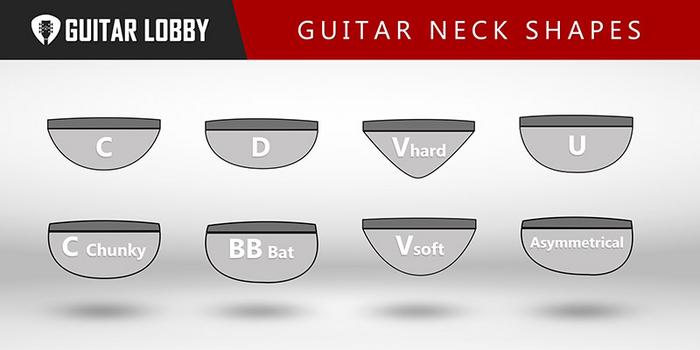
In my tenure as an editor of the Savart Journal, neck profiles have emerged as one of the most underappreciated yet critical aspects that contribute to a guitar’s overall tone, playability, and comfort. Today, I will guide you in discerning one such essential attribute of Jackson guitar neck specifications – the neck profiles.
Neck profiles essentially refer to the shape of the back of the guitar neck. Millions of guitarists worldwide mostly prefer the C-shape neck due to its ergonomic design that naturally accommodates the curvature of the thumb and the fingers. The variations in the hardness, density, and resilience of the wood material used contribute substantially to the guitar’s resonance and specific tonal characteristics, thereby impacting the feel and sound of the guitar.
For Jackson guitars, understanding neck profiles hold even greater importance. This is primarily due to the brand’s iconic status in musical genres that demand speedy and precise guitar work, such as heavy metal and hard rock. These styles entail the need for comfortable and playable necks that facilitate quicker, effortless finger movements. The choice of neck profile significantly affects the guitarist’s capacity to achieve these quick movements, embodying not just an aesthetic element, but also, essentially, a functional feature.
Comprehending guitar neck profiles becomes pivotal when replacing or customizing your Jackson guitar neck. It aids in ensuring that you retain, if not enhance, the comfortable grip and speedy action of the neck — fundamental attributes that make Jackson Guitars stand out.
As we delve deeper into the specifics of the material and fretboard up next, remember that the right integration of all these elements creates the unique balance captured in a Jackson guitar neck. With this understanding, you are now a step closer to identifying compatible Jackson guitar necks, as we will discuss further in the next section.
Material and Fretboard
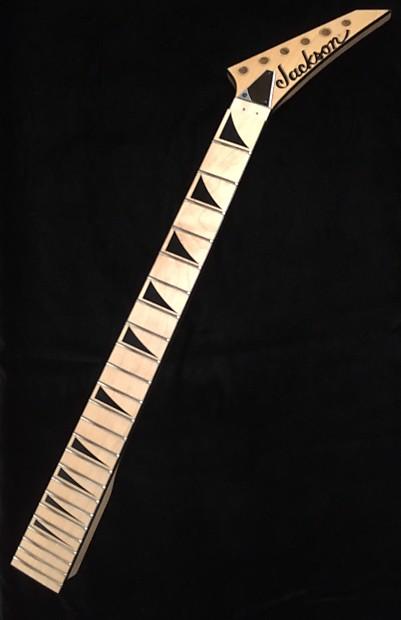
Delving into the core of the ‘Material and Fretboard’ specification, a distinguishing element of Jackson guitar neck design rests in its incredible diversity. I’ve experimented with different materials and can, from personal experience, attest to how each adds a unique flavour to the guitar’s overall performance.
The maple neck is a classic. Known for its resilience and stability, it offers a bright tonal quality which, when incorporated in a Jackson guitar, amplifies the instrument’s renowned melodic intensity. An aluminum guitar neck, on the other hand, albeit less traditional, offers an exciting appeal. While maintaining stability, aluminum necks are lighter in weight and can extend a sonorous, crystal-clear tone. It’s a remarkable option for those willing to experiment and deviate from the conventional.
And then, there’s the Rosewood fretboard. Renowned for its rich, warm tones, this robust hardwood has a naturally oily surface that makes for swift and smooth transitions across the frets – a characteristic fondly appreciated by speed thrashers and blues-lovers alike. Furthermore, the dark hue of rosewood brings a stunning contrast against the lighter maple neck, enhancing the visual appeal of your Jackson guitar.
In conclusion, the combination of the right neck material and fretboard can dramatically enhance the playability, tone, and aesthetics of your Jackson guitar. As we move into the subsequent section of ‘Scale Length & Frets’, it is essential to remember that these elements are interconnected and must be considered in unison to achieve the desired guitar performance.
Scale Length & Frets
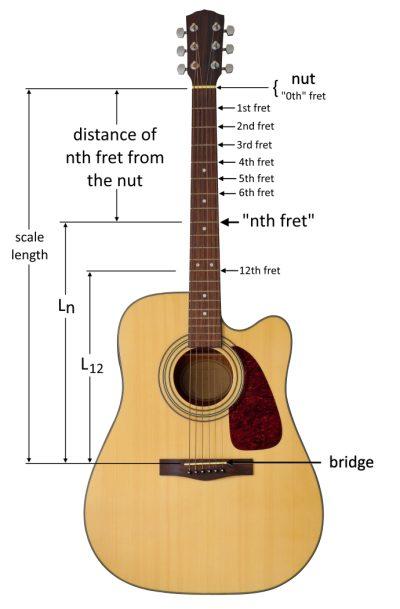
As an expert in guitar construction, I can’t emphasize enough how crucial the interplay is between the scale length and the number of frets when it comes to achieving optimal playability and tone for a Jackson guitar. This is particularly relevant when we discuss the 24 fret neck and 25.5-inch scale neck specifications.
The 24 fret neck is favored by many guitarists for its extended range, enabling you to reach higher octave notes with ease. With a full two octaves at your disposal, the sonic versatility of your Jackson guitar significantly increases. This is a key contributor to the instrument’s signature sound, often characterized by a mix of warm lows, crunchy mids, and sharp, singing highs.
Moving on to the 25.5-inch scale neck, this dimension is perhaps the most widespread in the guitar world. It has become an industry standard due to its balance between tension and playability, offering a smooth action across the fretboard while maintaining the essential string tension to produce a clean and clear tone. It’s important to note that the scale length directly impacts the instrument’s pitch and intonation, consequently influencing the positioning of the frets on the neck.
Given these elements, understanding these key Jackson guitar neck specifications is essential for any guitarist. The synergy between the scale length and the number of frets plays an integral role in shaping the characteristic tone and playability of a Jackson guitar. Moving forward, we will dive deeper into identifying compatible Jackson guitar necks, extracting further value out of these insights on our musical journey.
Identifying Compatible Jackson Guitar Necks
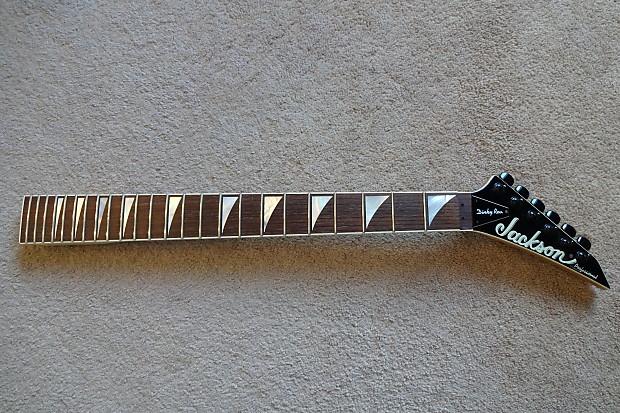
As someone deeply entrenched in the world of stringed instruments design and construction, I’ve seen first-hand how a guitar’s neck can significantly influence the instrument’s performance and playability. One thrilling process I’ve engaged with countless times is matching an appropriately compatible neck to a beloved Jackson guitar. I’m pleasantly well-seasoned in the art of understanding neck compatibility and passionately ready to empower you with knowledge so you can be the master of your guitar’s sound and personality.
Over the course of my career, I’ve discovered that sometimes, default guitar necks may not satisfy a player’s unique preference or style. Advanced guitarists often seek a more personalized touch, shaping their instruments to match their performance style and tone. As we’ve explored in previous chapters, Jackson guitars offer a unique blend of versatility, durability, and classism that put them in a league of their own, however, finding a compatible neck can be as instrumental as the riffs you play. This brings us to an engaging question; Can swapping your guitar neck for a compatible one lead to a groundbreaking shift in your guitar performance? Indeed, it can. It’s a transformative journey worth considering, and I’m eager to guide you through it, echoing my intimate understanding of these instruments.
Firstly, let’s talk about Jackson neck pocket dimensions.
These are significant as they can drastically influence neck compatibility. Not all guitar necks are universally compatible, and Jackson guitars are no exception. Ideally, you require an intimate understanding of these pocket dimensions which form the basis of matching new necks to your instrument. The neck pocket is the narrow body cavity where the neck joins the body of the guitar. By comprehensively understanding these dimensions, you can identify the right neck that offers a snug fit, excellent resonance, and structural stability.
As we trudge on, considering Warmoth neck compatibility is another essential aspect. Despite being more commonly associated with Fender instruments, Warmoth has made a name for itself among Jackson aficionados as well. Specifically when it comes to special tonewood options and fretboard radius, Warmoth necks allow for a full range of customization that can impeccably match with the demands of a Jackson guitar.
That said, Warmoth isn’t the only alternative for Jackson necks. My extensive guitar crafting experience has seen me cross paths with Charvel guitar necks. Known for their speedy feel and easy playability, I’ve found Charvel necks to blend perfectly with the hard-edged tones Jackson guitars are reputed for. Moreover, Charvel and Jackson share enough history, and Charvel necks are regularly spotted on Jackson bodies.
However, any compatibility consideration must navigate with careful precision to avoid a mismatch. Remember, what works for one Jackson model might not translate with the same success to another model. The journey to finding a suitable Jackson guitar neck takes some homework, yet the results could lead to a distinct transformation. It’s this intrigue that has kept me deeply passionate about exploring neck compatibility with different guitar models.
As we transition to the next chapter on DIY installation, it’s important to note that finding a compatible neck is just the start. Proper installation, a firm grasp on the necessary tools, and comprehensive understanding of the preconditions are all part of the mix. Stay tuned, and keep strumming.
DIY Installation of a Jackson Guitar Neck
Tools & Preconditions
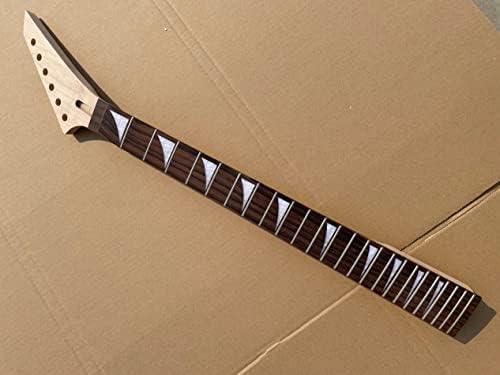
Before we delve into the step-by-step guide, it’s crucial to discuss the relevant tools and precautions needed for the initial DIY installation of a Jackson guitar neck. As a seasoned luthier, I can’t stress enough how crucial this aspect is.
Essentially, you’ll require the following items: a wrench, a set of Allen keys, some wood glue, and the specific Jackson guitar neckplate designed to fit your guitar model. A bolt-on neck, which is characteristic of many Jackson models, simplifies the installation process drastically. Just ensure you have the appropriate tools on hand.
Preparation also calls for considering what might go wrong. One paramount factor is the correct alignment of the neck. Failing in this can distort the pitch and playability of your guitar. Particularly, you’ll need to pay attention to the fitting of the locking nut—a key component in the Jackson’s Floyd Rose tremolo system. Ensure you affix it correctly as it crucially preserves string tension and tuning stability.
In all these steps, remember that safety is a paramount priority. Always handle your guitar and tools with care to circumvent accidental damage or even personal injury. Coating the bolt holes with wood glue before tightening them ensures stable installation, but beware of applying excessive force that could crack your guitar neck.
We’re about to move on to the actual DIY installation procedures, but bear in mind that my advice here in ‘Tools & Preconditions’ is purposed not only for a successful setup but also to preserve the life and quality of your treasured guitar. Thus, understanding every part of your Jackson guitar—be it the neckplate, the bolt-on neck, or the locking nut—will undoubtedly conduce to an unsurpassed DIY installation experience.
Step-by-Step Guide
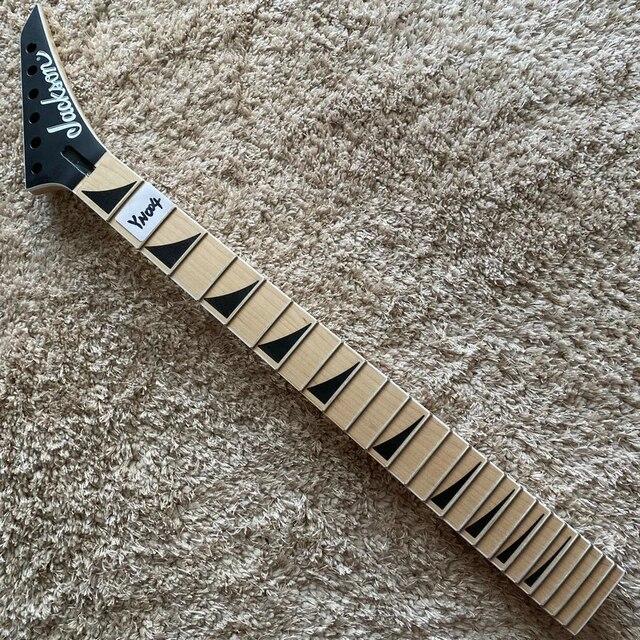
On that note, it’s time to delve into the heart of this subject – the step-by-step guide for the DIY installation of a Jackson guitar neck. As a seasoned luthier, I assure you that this process doesn’t have to be intimidating or overly technical. As long as you arm yourself with the right tools, a little patience, and this detailed guide, you’ll find guitar neck replacement to be a rewarding endeavor.
To kick off this neck installation guide, ensure your work area remains clean and well-lit. Remove the strings from your guitar, as well as the old neck, meticulously paying attention to how it was attached. Take note of the screws, bolts, and any other fasteners – you will need this knowledge when assembling the new neck.
Next up is the careful examination of the guitar body and neck pocket. Use a dry cloth to clean out any dust or debris to ensure a snug fit for the new neck. You’re not just replacing a component; you’re breathing new life into your guitar, and cleanliness helps to enhance tone quality.
Now comes the moment of truth – aligning the DIY guitar neck to correspond perfectly with the body before screwing it in place. As this stage requires precision, I often suggest folks align the neck loosely and check the guitar’s alignment. Only after ensuring a straight line from the bridge to the neck should you tighten the screws in an ‘X’ pattern. This even pressure distribution ensures stability without damaging the guitar neck or body.
This guitar neck replacement process isn’t over just yet. You may experience slight post-installation issues like fret buzz or high action. Adjusting the truss rod and saddle heights should ameliorate these minor discrepancies, giving you the playability and tone you desire. And there you have it, folks! You’ve successfully installed a Jackson guitar neck all by yourself.
Before wrapping up this guide, I’d like to stress the importance of thoughtful assessment once your new neck is securely installed. It’s recommended to play your guitar for a bit. Tend to the uniqueness of its sound, the comfort of the neck in your hand, your fingers’ ease across the fretboard. You now have intimate knowledge of your instrument that most players lack. This familiarity propels your connection to your instrument to a whole new level.
Now, where do you go from here? Don’t fret! Our next chapter will offer insight into where to buy Jackson guitar necks and aftermarket options suitable for every budget and preference.
Where to Buy Jackson Guitar Necks and Aftermarket Options
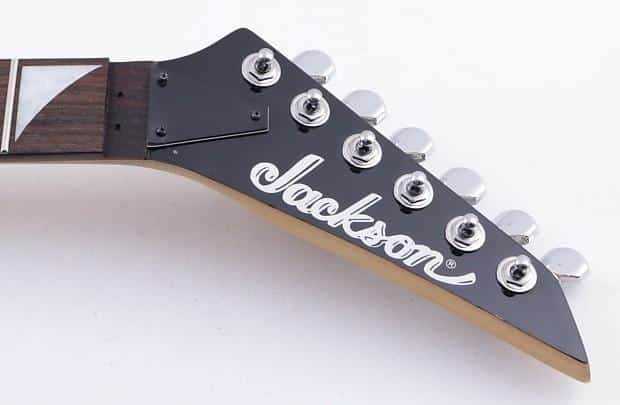
Being part of the New England Luthiers and the wider luthier community, I have access to insider information on some of the best places to find quality aftermarket and replacement guitar necks. Deciding where to buy your Jackson guitar neck, as well as evaluating aftermarket options, is just as crucial as understanding its specifications, compatibility, and installation process. How or where you acquire your replacement neck can significantly influence the overall tone, playability, and aesthetic appeal of your beloved guitar.
So, it’s key to navigate this next step with as much attention to detail as possible, just as we have addressed other technical aspects earlier in this guide.
Looking for the best places to find replacement options for your Jackson guitar neck? Or, curious about quality aftermarket neck options? Great! You’re right on track, and I’ll share my experience and insights based on years of interacting with fellow luthiers, guitar techs, and passionate guitar enthusiasts.
I find that many guitarists first instinct is to go directly to the brand’s website or to an authorized dealer for a replacement neck. Jackson’s online store often stocks a wide range of replacement parts, including necks for their various models. Yet, availability can vary drastically, and you may not always find what you’re after.
If you find yourself in such an impasse, don’t despair. You may have better luck exploring other avenues. Music retail giants like Guitar Center or Sweetwater are also trusted platforms where you can find original Jackson parts. They often offer wider selections, the advantage of customer reviews, and potentially better deals.
However, some of you might be specifically seeking Jackson style necks, and the aftermarket universe offers numerous alternatives. Websites like eBay, Reverb, or even Amazon can house scores of aftermarket guitar necks, with specifications remarkably close to the authentic Jackson make. Private sellers and smaller retailers on these platforms often sell these parts at far more affordable prices.
A note of caution, though. Always verify the credibility of the seller or the retailer before making a purchase. Specifically, online transaction certainty and product return policy should be prime considerations.
An interesting place I’d recommend exploring is Warmoth. This online store specifically caters to guitar enthusiasts, focusing solely on parts and components. They routinely stock aftermarket necks that have received overwhelmingly positive reviews from guitarists all over the world. You can even customize certain aspects according to your liking.
In embraced circles, we often frequent guitar shows, flea markets, and local music stores, sniffing out gems that hold innate value either due to their age or rarity. Embrace the thrill of the hunt!
In conclusion, finding the perfect neck for your Jackson guitar is a journey that goes beyond brand websites and authorized dealers. Given your unique preferences, don’t limit yourself. Explore, question and reassure before making a decision. Be it brand new, second-hand, or aftermarket guitar necks, remember to trust your instincts, complemented by careful scrutiny, for the perfect purchase.
With this newfound understanding of where to buy your Jackson guitar neck and about aftermarket options, you’re all set. All roads lead us to the final exciting phase – Installing your new or renewed Jackson guitar neck. Brace yourself, as we shall dive into that in the next section of our comprehensive guide.
FAQs
What are the specifications of a Jackson Guitar Neck?
Is the Jackson Guitar Neck compatible with other guitar models?
How do you install a Jackson Guitar Neck?
Conclusion
Throughout my career in lutherie, the Jackson guitar neck has stood out as a remarkable design. Its specifications – its profiles, material, fretboard, scale length and frets – make it unique, offering a distinct feel and sound that can drastically enhance a guitarist’s performance. But why are the taste and preferences for various guitar necks so subjective among guitarists? Here’s my take!
A Jackson guitar neck is not just an appendage to the body of the guitar; it’s a conduit through which a musician expresses their art. It’s a personal connection, a marriage of art and engineering that, when skillfully chosen and installed, can drastically enhance a musician’s performance. Its compatibility with your guitar is crucial, and its selection and installation can be a fulfilling challenge for many DIY enthusiasts.
But this journey of selection, compatibility, and installation is not a one-size-fits-all scenario. Guitars and guitarists are as diverse as the music they produce. To understand Jackson’s impact, you need to delve into its profiles, explore its materials, and appreciate the careful balancing act that is its fretboard, scale length and frets. These complex components merge seamlessly to create the distinct, unforgettable sound of a Jackson guitar.
The Jackson guitar neck is a game-changer. It signifies freedom of choice and possibility, giving musicians the tools to sculpt a sound unique to them. Its steep learning curve may intimidate some, but those who dare to dive into it find an instrument that moulds into their hands, less a foreign object, more a part of their creative essence.
Through this guide, we’ve explored why the Jackson guitar neck has such appeal. From profiles to DIY installation and even where to buy aftermarket options, we’ve seen how this unique neck can be a transformative ticket into the world of personalized sound. Its specifications place it in a league of its own, and its compatibility requirements ensure a perfect fit. So, go on, explore your options and dive into the world of Jackson, because each string you strum carries the weight of your passion, creativity, and your unique touch.